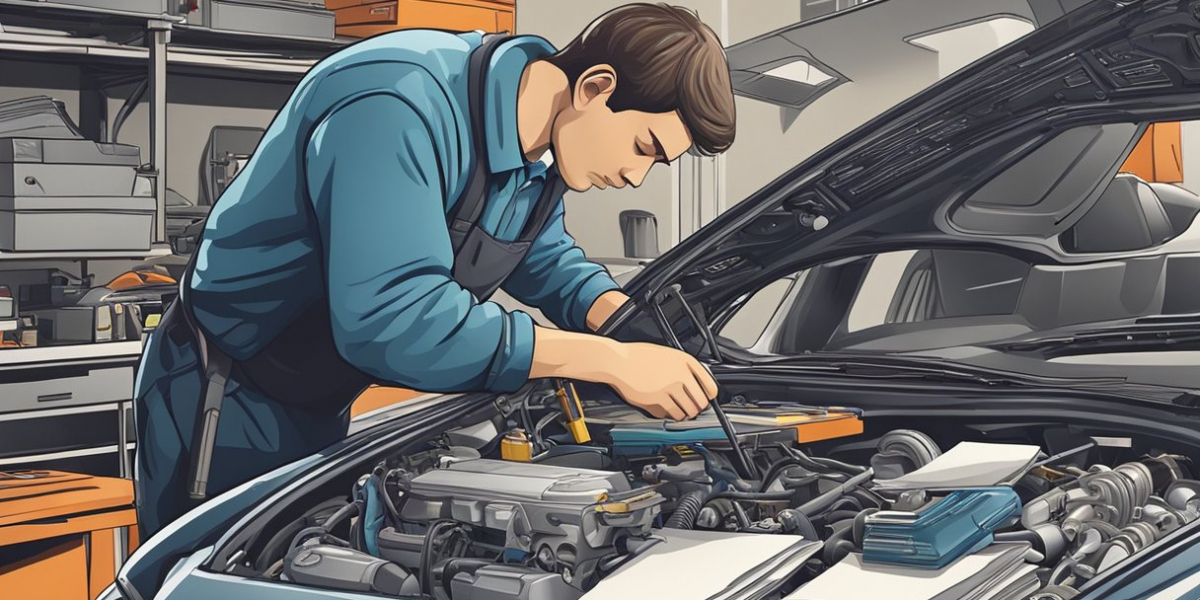When working on vehicles, having the right auto manual can make a world of difference for mechanics. It's not just about knowing where parts go but understanding every intricate detail that guides the repair process. These manuals are vital for both novice and experienced mechanics alike, providing detailed illustrations, step-by-step instructions, and troubleshooting tips that help ensure a quality repair job.
Picking the right auto manual depends on the vehicle's make, model, and year, as well as the depth of knowledge needed. Some manuals offer a broad overview ideal for quick fixes, while others dive deeper into the electrical systems or engine specifics. Choosing the correct type saves time and increases repair accuracy, which is crucial in a fast-paced workshop environment.
The choice doesn't stop at paper manuals; digital versions are increasingly popular. These often include interactive features, such as video guides and software compatibility, enhancing the learning and repair process. Whether using traditional books or digital formats, a well-chosen auto manual is an indispensable tool for any mechanic.
Understanding Auto Manuals
Auto manuals are crucial for both new and experienced mechanics. They provide detailed instructions, offer safety tips, and include important information about vehicle systems. Choosing between different types and formats can affect how effectively a manual meets a mechanic’s needs.
Types of Auto Manuals
There are several types of auto manuals available, each designed for specific needs. Owner’s manuals offer basic information about the vehicle with tips for routine maintenance and small repairs. Service manuals are for mechanics, offering in-depth instructions on complex repairs and systems.
Repair manuals focus on fixes that can be done without professional help. A wiring diagram manual is important for electrical issues. Mechanics should choose manuals based on the type of work they plan to perform. Each type serves a unique purpose and audience.
Manual vs. Digital Formats
Auto manuals come in both print and digital formats. Printed manuals are tangible and reliable, not relying on batteries or internet. They can be used anywhere but might be bulky. Digital manuals, on the other hand, can be accessed via smartphones or tablets. They offer search features and easy updates.
Many mechanics prefer digital versions for their speed and convenience. Manuals in digital form also save space and are often cheaper. Choosing the right format depends on the preference, working environment, and specific needs of the mechanic. Knowing the pros and cons helps in making an informed choice.
Importance of Regular Updates
Regular updates are very important in auto manuals. Vehicle technology changes often, and manuals need to reflect the latest developments. Updated manuals include new repair techniques, parts, and safety measures.
Mechanics should ensure their manuals are current to avoid mistakes and ensure efficient repairs. Outdated information can lead to incorrect repairs, posing safety risks. Keeping manuals updated supports learning and helps mechanics stay competitive. Regular updates guarantee the most accurate and comprehensive information for vehicle maintenance and repair work.
Selecting Auto Manuals
Choosing the right auto manual can greatly help mechanics in fixing or maintaining vehicles. Key factors to consider include the car's make and model, the complexity of the repair work, and technical specifications.
By Vehicle Make and Model
When selecting auto manuals, it is crucial to match the guide to the specific make and model of the vehicle. Every car has unique features and systems. Manuals designed for one brand might not suit another. For instance, a manual for a Toyota might not be helpful for a Ford.
Additionally, using an appropriate manual assists in accurately identifying vehicle parts and understanding their functions. This can prevent errors and wasted time during repairs. There are many guides tailored to popular brands, making it easier for mechanics to find what they need quickly.
By Repair Complexity
Another factor is the complexity of the repair. Not all auto manuals cover the same level of detail. Some focus on basic maintenance like oil changes or brake checks. Others dive into more complex repairs like engine overhauls or transmission replacements.
Selecting the right manual based on repair complexity ensures mechanics have the needed step-by-step instructions. Detailed diagrams and troubleshooting tips also help solve problems efficiently. It’s important for mechanics to choose a guide that matches their skill level and the job’s demands.
By Technical Specifications
Lastly, auto manuals should include detailed technical specifications. These specifications guide mechanics on precise measurements, torque settings, and fluid types. Accurate technical information is crucial for ensuring repairs meet the vehicle’s original standards and safety requirements.
Manuals with detailed specifications help mechanics understand how different parts interact. This understanding aids in diagnosing issues more efficiently. Manuals from official manufacturers often provide the most reliable specifications.
Using Auto Manuals Effectively
Auto manuals are essential tools for mechanics. They help in navigating complex repairs and understanding vehicle systems. Learning to efficiently use these manuals can save time and prevent errors.
Navigating Sections and Diagrams
Auto manuals come with organized sections and detailed diagrams that show different parts and systems. Understanding how to move through these sections quickly is important. Look for the index or table of contents to find the right section.
Diagrams are useful for visual learning. They often accompany the text to show how parts connect. Pay attention to labels and numbers that match parts in diagrams with their descriptions in the manual. This connection makes it easier to understand the setup and function of components.
Cross-reference tables can also guide you to additional information that might be necessary for a complete repair or maintenance task. Consistent practice and familiarity with the layout improve navigation skills, allowing mechanics to work more effectively.
Tools and Resources for Mechanics
Using the right tools is just as important as the manuals themselves. Having a set of reliable tools that align with the tasks in the manual is essential. Examples include socket wrenches, screwdrivers, and multimeters. Each tool corresponds with specific instructions in the manual.
Digital resources complement printed manuals. Websites and forums often have video tutorials or user experiences that provide additional insights. Mechanics can also access downloadable PDFs for easy reference during repairs. This combination of print and digital resources enhances understanding and supports accurate work.
Some companies offer online libraries with updated manuals. These resources ensure mechanics have the latest information. Staying current with tool and manual updates helps solve problems efficiently.
Troubleshooting Common Issues
Mechanics face common issues, such as misreading instructions or lacking necessary information. Using manuals effectively includes learning how to troubleshoot these problems. Identify where mistakes might happen and take steps to correct them.
Using checklists helps with procedure accuracy. These checklists ensure that each step is followed without missing details. Manuals often include troubleshooting guides that walk through solutions for typical issues. Pay attention to error codes and how they are described in the manual, which explains how to address them.
Communication with fellow mechanics can also be valuable. Sharing experiences and solutions leads to better problem-solving. Keeping a personal log of past issues and their fixes can prevent repeated problems and promote more effective use of auto manuals.
Auto Manual Maintenance
Taking care of auto manuals involves organizing them for easy access, keeping physical copies in good shape, and keeping digital copies up-to-date. Each of these steps ensures that mechanics have reliable information ready when needed.
Organizing Manuals for Quick Access
A well-organized set of manuals helps mechanics find information fast. Labeling is key. Each manual should be labeled clearly, including the make, model, and year of the vehicle. Consider using color-coded labels to further organize manuals by category or section. A simple filing system, like alphabetical or numerical order, helps locate a manual quickly.
Dedicated Shelving or a filing cabinet can keep physical manuals tidy. Digital manuals can be organized in folders, with each folder named after the car model or type of repair. Regularly reviewing and organizing these manuals saves time in the workshop.
Preserving Physical Copies
Physical auto manuals can wear out over time, especially in a busy workshop. To protect them, use plastic covers or sleeves. These protect against dirt, grease, and accidental spills. Store manuals in a cool, dry place to prevent damage from moisture and heat.
Ensure manuals are returned to their proper place after each use. This helps maintain their condition and ensures information is readily available for the next use. If a manual is heavily used, consider getting a backup copy or laminating pages with essential information.
Updating Digital Copies
Digital manuals need regular updates for accuracy. It’s important to check for updates from manufacturers or suppliers. Regular backups are crucial. They protect information in case of data loss. Use cloud storage solutions to keep digital manuals accessible from any device, which can be more convenient than printed copies.
Software tools can track updates and provide notifications when new versions are available. This keeps the information correct and comprehensive. Routinely checking and organizing digital files can help maintain a streamlined library, making it easier for mechanics to find the information they need quickly.
Best Practices
Choosing the right auto manual is crucial for success in the mechanic's shop. Mechanics can benefit by using multiple manuals and continuing to learn throughout their careers.
Cross-Referencing Multiple Manuals
Using more than one manual can provide a well-rounded view. Each manual might have different diagrams or step-by-step instructions. This can help in understanding complex repairs better.
Cross-referencing allows mechanics to double-check information. It minimizes errors by ensuring details are accurate. It’s like having a second set of eyes on a problem.
Sometimes, one manual may miss or simplify crucial steps. By consulting a second or even a third manual, these gaps can be filled. This kind of practice is especially useful for complex vehicles with intricate systems. It leads to more confident and accurate repairs.
Continual Learning and Skill Development
Mechanics must stay updated with the latest technologies and repair methods. Cars change quickly, with new models and features emerging regularly. Updating skills is important.
Attending workshops and training sessions is beneficial. Manufacturers often offer these to introduce new repair techniques. Online courses and videos can also be valuable resources.
Reading articles and joining mechanic forums can help too. Mechanics should aim to expand their knowledge base regularly. Investing time in learning can lead to improved performance and customer satisfaction. Skilled mechanics are an asset to any workshop.









